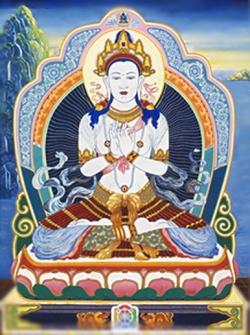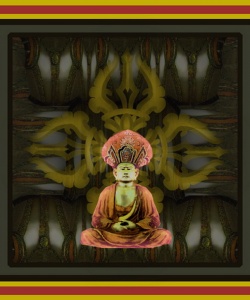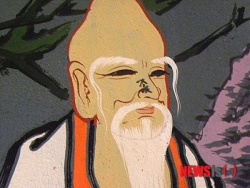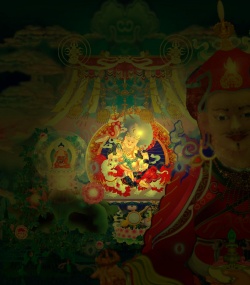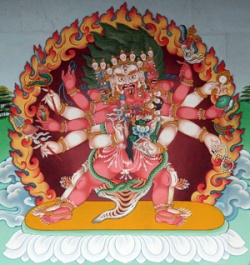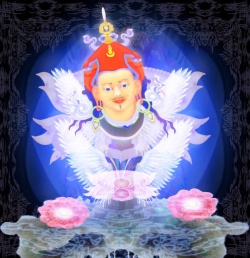Difference between revisions of "A Descriptive Catalogue of Poets Quoted in Sanskrit Anthologies and Inscriptions"
(Created page with " <poem> "He may show the ways of {{Wiki|sophistry}} and contention, yet he is always conscious of ultimate meanings and has perfected ...") |
|||
| (5 intermediate revisions by 2 users not shown) | |||
| Line 1: | Line 1: | ||
| + | {{DisplayImages|2039|1967|4449|1236|3227|2418|4183|1618|3130|4432}} | ||
| − | |||
| − | |||
| − | |||
| − | |||
| − | |||
| − | |||
| − | |||
| − | |||
| − | + | <poem> | |
| − | + | A Descriptive Catalogue of Poets Quoted in [[Sanskrit]] Anthologies and Inscriptions, Otto Harrassowitz ([[Wiesbaden]] 1978), in two volumes, and Timothy C. Cahill, An Annotated [[Bibliography]] of the [http://www.brill.com/annotated-bibliography-alam-karasastra Alaṃkāraśāstra], {{Wiki|Handbuch der | |
| − | |||
| − | |||
| − | |||
| − | |||
| − | |||
| − | |||
| − | |||
| − | |||
| − | |||
| − | |||
| − | |||
| − | |||
| − | |||
| − | |||
| − | |||
| − | |||
| − | |||
| − | |||
| − | |||
| − | |||
| − | |||
| − | |||
| − | |||
| − | |||
| − | |||
| − | |||
| − | |||
| − | |||
| − | |||
| − | |||
| − | |||
| − | |||
| − | |||
| − | |||
| − | |||
| − | |||
| − | |||
| − | |||
| − | |||
| − | |||
| − | |||
| − | |||
| − | |||
| − | |||
| − | |||
| − | |||
| − | |||
| − | |||
| − | |||
| − | |||
| − | |||
| − | |||
| − | |||
| − | |||
| − | |||
| − | |||
| − | |||
| − | |||
| − | |||
| − | |||
| − | |||
| − | |||
| − | |||
| − | |||
| − | |||
| − | |||
| − | |||
| − | |||
| − | |||
| − | |||
| − | |||
| − | |||
| − | |||
| − | |||
| − | |||
| − | |||
| − | |||
| − | |||
| − | |||
| − | |||
| − | |||
| − | |||
| − | |||
| − | |||
| − | |||
| − | |||
| − | |||
| − | |||
| − | |||
| − | |||
| − | |||
| − | |||
| − | |||
| − | |||
| − | |||
| − | |||
| − | |||
| − | |||
| − | |||
| − | |||
| − | |||
| − | |||
| − | |||
| − | |||
| − | |||
| − | |||
| − | |||
| − | |||
| − | |||
| − | |||
| − | |||
| − | |||
| − | |||
| − | |||
| − | |||
| − | |||
| − | |||
| − | |||
| − | |||
| − | |||
| − | |||
| − | |||
| − | |||
| − | |||
| − | |||
| − | |||
| − | |||
| − | |||
| − | |||
| − | |||
| − | |||
| − | |||
| − | |||
| − | |||
| − | |||
| − | |||
| − | |||
| − | |||
| − | |||
| − | |||
| − | |||
| − | |||
| − | |||
| − | |||
| − | |||
| − | |||
| − | |||
| − | |||
| − | |||
| − | |||
| − | |||
| − | |||
| − | |||
| − | |||
| − | |||
| − | |||
| − | |||
| − | |||
| − | |||
| − | |||
| − | |||
| − | |||
| − | |||
| − | |||
| − | |||
| − | |||
| − | |||
| − | |||
| − | |||
| − | |||
| − | |||
| − | |||
| − | |||
| − | |||
| − | |||
| − | |||
| − | |||
| − | |||
| − | |||
| − | |||
| − | |||
| − | |||
| − | |||
| − | |||
| − | |||
| − | |||
| − | |||
| − | |||
| − | |||
| − | |||
| − | |||
| − | |||
| − | |||
| − | |||
| − | |||
| − | |||
| − | |||
| − | |||
| − | |||
| − | |||
| − | |||
| − | |||
| − | |||
| − | |||
| − | |||
| − | |||
| − | |||
| − | |||
| − | |||
| − | |||
| − | |||
| − | |||
| − | |||
| − | |||
| − | |||
| − | |||
| − | |||
| − | |||
| − | |||
| − | |||
| − | |||
| − | |||
| − | |||
| − | |||
| − | |||
| − | |||
| − | |||
| − | |||
| − | |||
| − | + | Orientalistik}}, Section Two, Indien, series no. 14, Brill ([[Leiden]] 2001). For [[Indian]] [[philosophers]] of all schools, the most comprehensive are Karl Potter's bibliographies (available in printed [[form]] or via internet download). For [[yoga]], [[tantra]] and [[kuṇḍalinī]], I recommend "[[Kundalini]] [[Bibliography]]" compiled by Kurt [http://www.eecs.berkeley.edu/~keutzer/ Keutzer], posted on the worldwide web in 1998 (accessed through spiritweb.org, but try this address: http://www.eecs.berkeley.edu/~keutzer/kundalini/kunda-bib-web.html). For [[Tibetan]] authors and titles, best try searching the [[Tibetan Buddhist]] Resource Center's (TBRC) online database (http://www.tbrc.org/). | |
| − | + | Extra [[Wikipedia:canonical|canonical]] historical, biographical, [[ritual]] and [[tantric]]-{{Wiki|commentarial}} texts are not well represented, and were never intended to be. | |
| − | + | Extra [[Wikipedia:canonical|canonical]] [[Tibetan]] authored texts on [[medicine]], crafts and [[logic]] have not been much included, although they may be subordinated to [[Indic]] works on which they comment or with which they are in some way related. | |
| − | [[ | + | Works on the [[Tibetan]] [[Bon religion]] are nearly absent, although there are good arguments for [[including]] them, since there are a number of arguable or demonstrable connections with [[India]]. Some very useful {{Wiki|bibliographical}} resources are now available for [[Bon]] [[scriptures]] ([[Bka]]', the [[Bon]] [[Kanjur]]) and compositions ([[Bka' brten]], the [[Bon]] [[Tanjur]]), and more will become available before long. The more important resources for [[Bon]] [[scriptural]] [[bibliography]] are listed here: |
| − | + | [[Samten G. Karmay]], A Catalogue of [[Bonpo]] Publications, The [[Toyo Bunko]] ([[Tokyo]] 1977). | |
| − | + | [[Samten G. Karmay]] and [http://www.minpaku.ac.jp/english/aboutus/pe/nagano/index Yasuhiko Nagano], eds., A Catalogue of the New Collection of [[Bonpo]] [[Katen]] Texts, [[Bon]] Studies nos. 4 5, Senri Ethnological Reports series nos. 24 25, National Museum of [[Ethnology]] ({{Wiki|Osaka}} 2001). | |
| − | + | Tseyang Changngoba, [[Namgyal Nyima Dagkar]], {{Wiki|Per Kværne}}, Dondrup Lhagyal, [[Dan Martin]], Donatella Rossi, and Tsering Thar, A Catalogue of the [[Bon]] [[Kanjur]], Senri Ethnological Reports series no. 40, volume editor, [[Dan Martin]]; series editor Yasuhiko [[Nagano]], National Museum of [[Ethnology]] ({{Wiki|Osaka}} 2003). | |
| − | + | A website from Otani {{Wiki|University}} in [[Japan]] makes it possible to search for [[Tibetan]] titles in the {{Wiki|Peking}} reprint edition of the [[Tibetan canon]]. Visit their site at: http://web.otani.ac.jp/cri/twrp/tibdate/Peking_online_search.html. | |
| − | + | There are very few titles of [[scriptures]] particular to the [[Rnying ma pa]] school. These titles may be found in a searchable database at the website of the "[[Tibetan]] and [[Himalayan]] Digital Library" (http://www.thdl.org/collections/literature/ngb/index.html), where one may find links to another website developed by [[Cathy Cantwell]] and [[Rob Mayer]]. The [[Rnying ma]] [[tantras]] that are included herein are mainly those relatively few that are located in the [[Derge Kanjur]]. | |
| − | + | There is some, yet I would say inadequate, coverage of proper names (both personal names and [[book]] titles) particular to the comparative [[philosophical]] [[Siddhānta]] ([[Grub mtha]]') {{Wiki|literature}}, a situation which ought to be remedied. | |
| − | [[ | + | I have attempted to include the names of foreign [[translators]] of [[Buddhist texts]] who were active in [[China]], even if it is true that overall, with very few exceptions, these figures played no significant role in the [[Tibetan]] [[realm]]. There are but a few entries for {{Wiki|eminent}} {{Wiki|Chinese}} [[Buddhist teachers]], and even then the {{Wiki|emphasis}} is on those {{Wiki|Chinese}} [[teachers]] who worked together with {{Wiki|Indians}}. I would hardly recommend this work as a primary reference for {{Wiki|East Asian}} [[language]] resources in general. For {{Wiki|Chinese}} [[scriptural]] works, a very good resource is to be found on the internet: "[[Bibliography]] of Translations from the [[Chinese Buddhist Canon]] into {{Wiki|Western}} [[Languages]]," compiled by Marcus Bingenheimer. [[Japanese]] [[Buddhological]] writings are not well enough represented in this [[bibliography]], and for this, too, I must [[apologize]]. |
| − | + | The general arrangement is quite simple: English alphabetic order is used throughout (regardless of whether the main entry is in [[Tibetan]] or an [[Indic]] [[language]] or, relatively rarely, English or {{Wiki|Chinese}} [[form]]; entries in {{Wiki|East Asian}}, {{Wiki|Southeast Asian}} [[languages]] and {{Wiki|Mongolian}} are rare and always at second hand). Wherever possible an author's [[name]] is given first. However, works of unknown authorship, [[including]] [[Wikipedia:canonical|canonical]] works, are placed in the very large first section. Subordinated to the author's [[name]] (given in [[Indic]] [[language]] [[forms]] wherever possible, with [[Tibetan language]] translations or transcriptions immediately following and enclosed in parentheses) are sources of [[information]] about him or her. Then there is an alphabetic listing of works by that same [[person]]. Generally the main works are foregrounded on the basis of the [[existence]] of a [[Tibetan language]] version whenever available, even though the [[Indic]] [[language]] title is given precedence wherever possible. Be well {{Wiki|aware}} that the presence of an [[Indic]] [[language]] title does not mean that an [[Indic]] text is therefore available (more likely than not, it is not). Subordinated to each title is a listing of translations, references and studies (where known and available to me) of that particular text. | |
| − | + | The personal [[name]] index to Chimpa, THBI, has been included ([[excluding]] only a few of the irrelevant items), which helps explain why there are a number of names of [[kings]] and even (but rather rarely) some [[supernatural]] or [[divine]] [[beings]] listed here. Of course, [[kings]] are often of importance for dating [[Buddhist]] figures associated with their reigns, particularly so in the cases of poets and [[Mahāsiddhas]]. Therefore some [[kings]]' names have been included, especially when they were {{Wiki|literary}} patrons, [[religious]] donors, or the like. | |
| − | + | There are some, but not nearly enough, names of characters who appear in the pages of {{Wiki|literary}} works. The presence of these other types of names should not obscure the fact that this database is primarily devoted to [1] authors and [2] their {{Wiki|literary}} works. There are even, I {{Wiki|fear}}, a few entries for place names, although this was not part of the original intent. It seemed better to leave them in than to take the trouble of taking them out. | |
| − | |||
| − | + | Compiled and typed by [[Dan Martin]], | |
| − | + | Edited by [[Alexander]] Cherniak, | |
| − | + | [[Jerusalem]] | |
| − | + | March 10, 2006 | |
| − | |||
| − | + | Anonymous ([[Wikipedia:canonical|canonical]] texts, texts with author unidentified, or with multiple\collective authorship) | |
| − | + | — [[Abhavapraśna]]. | |
| − | + | — Strickmann, CPP, p. 117. | |
| − | + | — [[Abhayakarīdhāraṇī]]. | |
| − | + | — Matsunami, p. 287. | |
| − | + | — [[Abhayakumārasya Padmottaratathāgatavyākaraṇa]]. | |
| − | + | — Matsunami, p. 233. | |
| − | + | — [[Abhayapradā nāma aparājita]] ('[[Phags pa gzhan gyis mi thub pa mi 'jigs pa sbyin pa]]). Tôh. no. 708 (also, no. 928). [[Derge Kanjur]], vol. TSA, folios 176v.1 177v.6. Tr. by [[Prajñāvarman]] and [[Ye shes sde]]. | |
| − | + | — EoB under the title "[[Abhayatādāna nāma aparājita]]." | |
| − | + | — [[Abhidhammamūlaṭīkā]]. | |
| − | + | — [[Nakamura]], p. 119. | |
| − | + | — [[Abhidhammatthasaṅgraha]]. | |
| − | + | — [[Nakamura]], p. 119, 126. | |
| − | + | — [[Abhidhānappadīpikā]]. | |
| − | + | — EoB. The most authoritative of the old [[Pāli]] {{Wiki|synonym}} lexicons, it held the same place in [[Pāli]] {{Wiki|literature}} as the [[Amarakoṣa]] did in [[Sanskrit]]. | |
| − | + | — Jinadasa Liyanaratne, [[Wikipedia:South Asia|South Asian]] Flora as Reflected in the Twelfth Century [[Pāli]] Lexicon [[Abhidhānappadīpikā]], [[Journal of the Pali Text Society]], vol. 20 (1994), pp. 43 161. | |
| − | + | — [[Bhikkhu]] [[Medagama Nandawansa]], [[Abhidhānappadīpikā]]: A Study of the Text and Its Commentary, [[Bhandarkar]] {{Wiki|Oriental}} Research Institute (Pune 2000), in 558 pages. | |
| − | + | — [[Abhidhānappadīpikā]] and [[Ekakharakośa]], [[Bauddha]] Bhārati series nos. 14 15 ([[Varanasi]] ????). [[Pāli]] [[Sanskrit]] {{Wiki|Hindi}} {{Wiki|dictionary}}. | |
| − | + | — [[Abhidhānottaratantra]] ([[Mngon par brjod pa'i rgyud bla ma]]). Tôh. no. 369. [[Derge Kanjur]], vol. [[KA]], folios 247r.1 370r.7. Tr. by [[Ānanda]] and Lo [[chung]] (but see the colophon). 69 chapters. | |
| − | + | — The colophon reads: mngon par brjod pa'i rgyud bla ma'i [[bla ma]] las gsang bas [[gsang ba'i]] [[bde mchog gi rgyud]] kyi [[rgyal po chen po]] [[zhes bya ba]] [[rdzogs]] so // [[rgya]] gar gyi [[mkhan po]] [[paṇḍi ta chen po]] dīpaṅka ra shrī dznyā na dang / bod kyi [[lo tsā ba]] [[chen po]] [[dge slong]] [[rin chen]] bzang pos bsgyur [[cing]] zhus te gtan la phab pa / phyis [[paṇḍi ta chen po]] dznyā na shrī dang / [[lo tsā ba]] [[khyung po]] [[chos kyi]] [[brtson 'grus]] [[kyis]] [[kyang]] zhus pa'o // // phyis paṇḍi ta ā [[nanda]] dang / lo [[chung]] gis chad [[lhag]] [[rnams]] bsabs nas / zhus dag byas nas {{Wiki|legs}} par bcos te gtan la phab // 'di las zab pa med do // Dīpaṅkaraśrījñāna ([[Atiśa]]) and [[Jñānaśrī]] (11th century) are mentioned here. | |
| − | + | — Martin M. Kalff, Selected Chapters from the [[Abhidhānottara Tantra]]: The Union of {{Wiki|Female}} and {{Wiki|Male}} [[Deities]], doctoral {{Wiki|dissertation}}, {{Wiki|Columbia University}} ({{Wiki|New York}} 1979). | |
| − | + | — EoB under "[[Abhidhānottarottara]]." | |
| − | + | — I am not certain who the [[translator]] Lo [[chung]] ought to be, but the most likely choice would be Lo [[chung]] [[Legs pa'i shes rab]]. | |
| − | + | — Palmleaf [[Sanskrit]] {{Wiki|manuscript}} in 156 folios belonging to the Nor bu [[gling ka]]. Here the title reads Śrīherukābhidhānamahātantrarāja...mahāsaṃvara. [[Tibetan]] version of the title given as [[Bde mchog sdom pa 'byung ba'i rgyud le'u sum cu rtsa gsum]] gyi [[bdag nyid]])]. KCDS, p. 16. | |
| − | + | — Palmleaf [[Sanskrit]] {{Wiki|manuscript}} now belonging to the Nor bu [[gling ka]]. [[Sanskrit]] title given as [[Śrīherukābhidhānamahātantrarājatrilakṣādhṛta]] ([[Tibetan]] given as [[Sdom pa 'byung ba'i rgyud gnang ba]]). KCDS, p. 26 (see also p. 35). | |
| − | + | — [[Sanskrit]] palmleaf {{Wiki|manuscript}} now belonging to [[Potala]]. Title given as Hevajrābhidhānaśrīcakrasaṃvara... I [[imagine]] it should read [[Herukābhidhāna]]... Listed as a text from [[Zhwa lu]] [[Monastery]]. KCDS, p. 131. | |
| − | + | — A 48 folio [[Sanskrit]] palmleaf {{Wiki|manuscript}} now belonging to [[Potala]], formerly of [[Ngor Monastery]]. Here the title is given as "[[Śrīherukābhidhānemahātantrarājaṃ]]." KCDS, p. 158. | |
| − | + | — Outline of 67 chapters. Matsunami, pp. 245 247. | |
| − | + | — BSM, p. 2 (MBB I 25). A 92 folio {{Wiki|manuscript}} dated 1743. Also, BSM, p. 6 (MBB I 100), a 194 folio palmleaf {{Wiki|manuscript}} dated 1138 CE. BSM, p. 13 (MBB II 89), with the title [[Herukābhidhānamahātantrarāja]]. A 73 folio {{Wiki|manuscript}} dated 1702. | |
| − | + | — [[Abhidharmadhātukāyapādaśāstra]]. | |
| − | + | — EoB. [[Exists]] only in {{Wiki|Chinese}} translation. | |
| − | + | — Banerjee, SL, pp. 54, 64 65. Said to be by [[Pūrṇa]]. | |
| − | + | — [[Abhidharmadīpa]]. | |
| − | + | — See also [[Abhidharmapradīpa]]. | |
| − | + | — Padmanabh S. Jaini, A Rare {{Wiki|Manuscript}} of [[Abhidharmadīpavibhāṣaprabhāvṛtti]], contained in: Bhāratī: Bulletin of the {{Wiki|College}} of {{Wiki|Indology}} ([[Banaras]] [[Hindu]] {{Wiki|University}}], vol. 1, no. 1 (1956 57), pp. 50 56. | |
| − | + | — Padmanabh S. Jaini, [[Abhidharmadīpa]] with [[Vibhāṣāprabhāvṛtti]]: Critically edited with notes and introduction, [[Kashi Prasad Jayaswal Research Institute]] ([[Patna]] 1959), with 144 pages in English, 499 pages in [[Sanskrit]]. Reviewed by {{Wiki|Alex Wayman}} in Journal of the [[American]] {{Wiki|Oriental}} {{Wiki|Society}}, vol. 82, no. 4 (October 1962), pp. 589 591. According to [[Wayman]], Jaini conjectures that the author of both works ought to be a follower of [[Saṅghabhadra]], perhaps one named [[Vimalamitra]] (dated to between 450 and 550 or perhaps earlier). It seeks to refute [[Vasubandhu's]] [[Abhidharma]] work. The author does refer to himself in the [[Vṛtti]] with the [[name]] Dīpakāra (a [[name]] which seems to mean simply that he is the author of the Dīpa, meaning the [[Abhidharmadīpa]], and therefore not a proper [[name]]). Reviewed by {{Wiki|J.W. de Jong}} in Indo {{Wiki|Iranian}} Journal, vol. 6 (1962), pp. 173 175. | |
| − | + | — Padmanabh S. Jaini, On the {{Wiki|Theory}} of Two [[Vasubandhus]], Bulletin of the [[Wikipedia:SOAS, University of London|School of Oriental and African Studies]], vol. 21, no. 1 3 (1958), pp. 48 53, at p. 49, says that the {{Wiki|manuscript}} of this work was found together with its commentary, the [[Vibhāṣāprabhāvṛtti]], in 1937, by Sānkṛtyāyana. | |
| − | + | — {{Wiki|J.W. de Jong}}, L'auteur de l'[[Abhidharmadīpa]], T'oung Pao, vol. 52 (1966), pp. 305 307. | |
| − | + | — [[Nakamura]], p. 112. Says it is by Dīpakāra, a [[disciple]] of [[Saṅghabhadra]]. | |
| − | + | — EoB discusses the {{Wiki|manuscript}} found in [[Tibet]] by [[Saṅkṛtyāyana]] in 1937. Jaini [[thinks]] that the [[person]] referred to as Dīpakāra ('author of the Dīpa') might have been [[Saṅghabhadra]] or a [[student]] of his (perhaps [[Vimalamitra]]), who was opposed to the [[Mahāyāna]] and to [[Vasubandhu]], and therefore, it is said, fell to the deepest [[hell]]. | |
| − | + | — Its commentary, the [[Abhidharmapradīpavibhāṣāprabhadaṃvṛtti]]. KCDS, p. 73. A palmleaf [[Sanskrit]] {{Wiki|manuscript}} now belonging to the [[Potala]]. | |
| − | + | — Bandurski, pp. 51 (catalogue no. 20) and 111. The {{Wiki|manuscript}} bears a cursive [[Tibetan]] title: [[Chos mngon pa'i sgron ma]] [illegible {{Wiki|syllables}} follow]. | |
| − | + | — [[Abhidharmahṛdayaśāstra]]. | |
| − | + | — [[Nakamura]], p. [[108]]. | |
| − | + | — EoB. Probably the work by [[Dharmaśreṣṭhin]], q.v. | |
| − | + | — Banerjee, SL, p. 74. Attributed to [[Dharmajina]] (?), it [[exists]] in {{Wiki|Chinese}} only. Translated by [[Saṅghadeva]] in 391 CE, it contains 10 chapters. It has a 10 [[chapter]] commentary with the same title, translated by Narendrayaśas in 563 CE. | |
| − | + | — [[Abhidharmajñānakāyapādaśāstra]]. | |
| − | + | — [[Nakamura]], p. 106. | |
| − | + | — [[Abhidharmajñānaprasthānaśāstra]]. | |
| − | + | — EoB. See EoB also under "[[Abhidharmāṣṭagrantha]]." | |
| − | + | — [[Abhidharmakośasamayapradīpikā]]. | |
| − | + | — [[Nakamura]], p. 112. | |
| − | + | — [[Abhidharmāmṛta]]. | |
| − | + | — [[Nakamura]], p. 175. | |
| − | + | — [[Abhidharmāmṛtaśāstra]]. | |
| − | + | — [[Nakamura]], p. [[108]]. | |
| − | + | — EoB under "[[Abhidharmāmṛta rasa śāstra]]." | |
| − | + | — Banerjee, SL, p. 74. Attributed to [[Ghoṣa]], it [[exists]] only in {{Wiki|Chinese}}. Contains 16 chapters. | |
| − | + | — [[Abhidharmanyāyānusāra]]. | |
| − | + | — [[Nakamura]], p. 112. Says it is by [[Saṅghabhadra]], alias [[Sahantabhadra]]. | |
| − | |||
| − | + | — EoB, says it is by [[Saṅghabhadra]], contemporary of [[Vasubandhu]], against whom he argues. | |
| − | + | — [[Abhidharmapañcadharmacarita Sūtra]]. | |
| − | + | — EoB. 2nd century translation into {{Wiki|Chinese}} by [[An Shigao]], the author is unknown. | |
| − | + | — ppAbhidharmapradīpa[[. | |
| − | |||
| − | + | — See also Abhidharmadīpa. | |
| − | + | — A [[Sanskrit]] {{Wiki|manuscript}}, of unknown authorship, found at [[Zhwa lu]] [[Monastery]]. SERS, p. 112. | |
| − | + | — [[Dge 'dun chos 'phel]], Works (1990), vol. 1, p. 20 lists a slightly incomplete (70 folio) [[Indian]] {{Wiki|manuscript}} at Zha lu, translating the title as | |
</poem> | </poem> | ||
{{R}} | {{R}} | ||
| − | [http:// | + | [http://enconv.org/docs/index-15734.html?page=3 enconv.org] |
| − | [[Category:]] | + | [[Category:Tibetan Buddhist canon]] |
| + | [[Category:India]] | ||
Latest revision as of 11:09, 17 February 2024
A Descriptive Catalogue of Poets Quoted in Sanskrit Anthologies and Inscriptions, Otto Harrassowitz (Wiesbaden 1978), in two volumes, and Timothy C. Cahill, An Annotated Bibliography of the Alaṃkāraśāstra, [[Wikipedia:Handbuch der
Orientalistik|Handbuch der
Orientalistik]], Section Two, Indien, series no. 14, Brill (Leiden 2001). For Indian philosophers of all schools, the most comprehensive are Karl Potter's bibliographies (available in printed form or via internet download). For yoga, tantra and kuṇḍalinī, I recommend "Kundalini Bibliography" compiled by Kurt Keutzer, posted on the worldwide web in 1998 (accessed through spiritweb.org, but try this address: http://www.eecs.berkeley.edu/~keutzer/kundalini/kunda-bib-web.html). For Tibetan authors and titles, best try searching the Tibetan Buddhist Resource Center's (TBRC) online database (http://www.tbrc.org/).
Extra canonical historical, biographical, ritual and tantric-commentarial texts are not well represented, and were never intended to be.
Extra canonical Tibetan authored texts on medicine, crafts and logic have not been much included, although they may be subordinated to Indic works on which they comment or with which they are in some way related.
Works on the Tibetan Bon religion are nearly absent, although there are good arguments for including them, since there are a number of arguable or demonstrable connections with India. Some very useful bibliographical resources are now available for Bon scriptures (Bka', the Bon Kanjur) and compositions (Bka' brten, the Bon Tanjur), and more will become available before long. The more important resources for Bon scriptural bibliography are listed here:
Samten G. Karmay, A Catalogue of Bonpo Publications, The Toyo Bunko (Tokyo 1977).
Samten G. Karmay and Yasuhiko Nagano, eds., A Catalogue of the New Collection of Bonpo Katen Texts, Bon Studies nos. 4 5, Senri Ethnological Reports series nos. 24 25, National Museum of Ethnology (Osaka 2001).
Tseyang Changngoba, Namgyal Nyima Dagkar, Per Kværne, Dondrup Lhagyal, Dan Martin, Donatella Rossi, and Tsering Thar, A Catalogue of the Bon Kanjur, Senri Ethnological Reports series no. 40, volume editor, Dan Martin; series editor Yasuhiko Nagano, National Museum of Ethnology (Osaka 2003).
A website from Otani University in Japan makes it possible to search for Tibetan titles in the Peking reprint edition of the Tibetan canon. Visit their site at: http://web.otani.ac.jp/cri/twrp/tibdate/Peking_online_search.html.
There are very few titles of scriptures particular to the Rnying ma pa school. These titles may be found in a searchable database at the website of the "Tibetan and Himalayan Digital Library" (http://www.thdl.org/collections/literature/ngb/index.html), where one may find links to another website developed by Cathy Cantwell and Rob Mayer. The Rnying ma tantras that are included herein are mainly those relatively few that are located in the Derge Kanjur.
There is some, yet I would say inadequate, coverage of proper names (both personal names and book titles) particular to the comparative philosophical Siddhānta (Grub mtha') literature, a situation which ought to be remedied.
I have attempted to include the names of foreign translators of Buddhist texts who were active in China, even if it is true that overall, with very few exceptions, these figures played no significant role in the Tibetan realm. There are but a few entries for eminent Chinese Buddhist teachers, and even then the emphasis is on those Chinese teachers who worked together with Indians. I would hardly recommend this work as a primary reference for East Asian language resources in general. For Chinese scriptural works, a very good resource is to be found on the internet: "Bibliography of Translations from the Chinese Buddhist Canon into Western Languages," compiled by Marcus Bingenheimer. Japanese Buddhological writings are not well enough represented in this bibliography, and for this, too, I must apologize.
The general arrangement is quite simple: English alphabetic order is used throughout (regardless of whether the main entry is in Tibetan or an Indic language or, relatively rarely, English or Chinese form; entries in East Asian, Southeast Asian languages and Mongolian are rare and always at second hand). Wherever possible an author's name is given first. However, works of unknown authorship, including canonical works, are placed in the very large first section. Subordinated to the author's name (given in Indic language forms wherever possible, with Tibetan language translations or transcriptions immediately following and enclosed in parentheses) are sources of information about him or her. Then there is an alphabetic listing of works by that same person. Generally the main works are foregrounded on the basis of the existence of a Tibetan language version whenever available, even though the Indic language title is given precedence wherever possible. Be well aware that the presence of an Indic language title does not mean that an Indic text is therefore available (more likely than not, it is not). Subordinated to each title is a listing of translations, references and studies (where known and available to me) of that particular text.
The personal name index to Chimpa, THBI, has been included (excluding only a few of the irrelevant items), which helps explain why there are a number of names of kings and even (but rather rarely) some supernatural or divine beings listed here. Of course, kings are often of importance for dating Buddhist figures associated with their reigns, particularly so in the cases of poets and Mahāsiddhas. Therefore some kings' names have been included, especially when they were literary patrons, religious donors, or the like.
There are some, but not nearly enough, names of characters who appear in the pages of literary works. The presence of these other types of names should not obscure the fact that this database is primarily devoted to [1] authors and [2] their literary works. There are even, I fear, a few entries for place names, although this was not part of the original intent. It seemed better to leave them in than to take the trouble of taking them out.
Compiled and typed by Dan Martin,
Edited by Alexander Cherniak,
Jerusalem
March 10, 2006
Anonymous (canonical texts, texts with author unidentified, or with multiple\collective authorship)
— Abhavapraśna.
— Strickmann, CPP, p. 117.
— Abhayakarīdhāraṇī.
— Matsunami, p. 287.
— Abhayakumārasya Padmottaratathāgatavyākaraṇa.
— Matsunami, p. 233.
— Abhayapradā nāma aparājita ('Phags pa gzhan gyis mi thub pa mi 'jigs pa sbyin pa). Tôh. no. 708 (also, no. 928). Derge Kanjur, vol. TSA, folios 176v.1 177v.6. Tr. by Prajñāvarman and Ye shes sde.
— EoB under the title "Abhayatādāna nāma aparājita."
— Abhidhammamūlaṭīkā.
— Nakamura, p. 119.
— Abhidhammatthasaṅgraha.
— Nakamura, p. 119, 126.
— Abhidhānappadīpikā.
— EoB. The most authoritative of the old Pāli synonym lexicons, it held the same place in Pāli literature as the Amarakoṣa did in Sanskrit.
— Jinadasa Liyanaratne, South Asian Flora as Reflected in the Twelfth Century Pāli Lexicon Abhidhānappadīpikā, Journal of the Pali Text Society, vol. 20 (1994), pp. 43 161.
— Bhikkhu Medagama Nandawansa, Abhidhānappadīpikā: A Study of the Text and Its Commentary, Bhandarkar Oriental Research Institute (Pune 2000), in 558 pages.
— Abhidhānappadīpikā and Ekakharakośa, Bauddha Bhārati series nos. 14 15 (Varanasi ????). Pāli Sanskrit Hindi dictionary.
— Abhidhānottaratantra (Mngon par brjod pa'i rgyud bla ma). Tôh. no. 369. Derge Kanjur, vol. KA, folios 247r.1 370r.7. Tr. by Ānanda and Lo chung (but see the colophon). 69 chapters.
— The colophon reads: mngon par brjod pa'i rgyud bla ma'i bla ma las gsang bas gsang ba'i bde mchog gi rgyud kyi rgyal po chen po zhes bya ba rdzogs so // rgya gar gyi mkhan po paṇḍi ta chen po dīpaṅka ra shrī dznyā na dang / bod kyi lo tsā ba chen po dge slong rin chen bzang pos bsgyur cing zhus te gtan la phab pa / phyis paṇḍi ta chen po dznyā na shrī dang / lo tsā ba khyung po chos kyi brtson 'grus kyis kyang zhus pa'o // // phyis paṇḍi ta ā nanda dang / lo chung gis chad lhag rnams bsabs nas / zhus dag byas nas legs par bcos te gtan la phab // 'di las zab pa med do // Dīpaṅkaraśrījñāna (Atiśa) and Jñānaśrī (11th century) are mentioned here.
— Martin M. Kalff, Selected Chapters from the Abhidhānottara Tantra: The Union of Female and Male Deities, doctoral dissertation, Columbia University (New York 1979).
— EoB under "Abhidhānottarottara."
— I am not certain who the translator Lo chung ought to be, but the most likely choice would be Lo chung Legs pa'i shes rab.
— Palmleaf Sanskrit manuscript in 156 folios belonging to the Nor bu gling ka. Here the title reads Śrīherukābhidhānamahātantrarāja...mahāsaṃvara. Tibetan version of the title given as Bde mchog sdom pa 'byung ba'i rgyud le'u sum cu rtsa gsum gyi bdag nyid)]. KCDS, p. 16.
— Palmleaf Sanskrit manuscript now belonging to the Nor bu gling ka. Sanskrit title given as Śrīherukābhidhānamahātantrarājatrilakṣādhṛta (Tibetan given as Sdom pa 'byung ba'i rgyud gnang ba). KCDS, p. 26 (see also p. 35).
— Sanskrit palmleaf manuscript now belonging to Potala. Title given as Hevajrābhidhānaśrīcakrasaṃvara... I imagine it should read Herukābhidhāna... Listed as a text from Zhwa lu Monastery. KCDS, p. 131.
— A 48 folio Sanskrit palmleaf manuscript now belonging to Potala, formerly of Ngor Monastery. Here the title is given as "Śrīherukābhidhānemahātantrarājaṃ." KCDS, p. 158.
— Outline of 67 chapters. Matsunami, pp. 245 247.
— BSM, p. 2 (MBB I 25). A 92 folio manuscript dated 1743. Also, BSM, p. 6 (MBB I 100), a 194 folio palmleaf manuscript dated 1138 CE. BSM, p. 13 (MBB II 89), with the title Herukābhidhānamahātantrarāja. A 73 folio manuscript dated 1702.
— Abhidharmadhātukāyapādaśāstra.
— EoB. Exists only in Chinese translation.
— Banerjee, SL, pp. 54, 64 65. Said to be by Pūrṇa.
— Abhidharmadīpa.
— See also Abhidharmapradīpa.
— Padmanabh S. Jaini, A Rare Manuscript of Abhidharmadīpavibhāṣaprabhāvṛtti, contained in: Bhāratī: Bulletin of the College of Indology (Banaras Hindu University], vol. 1, no. 1 (1956 57), pp. 50 56.
— Padmanabh S. Jaini, Abhidharmadīpa with Vibhāṣāprabhāvṛtti: Critically edited with notes and introduction, Kashi Prasad Jayaswal Research Institute (Patna 1959), with 144 pages in English, 499 pages in Sanskrit. Reviewed by Alex Wayman in Journal of the American Oriental Society, vol. 82, no. 4 (October 1962), pp. 589 591. According to Wayman, Jaini conjectures that the author of both works ought to be a follower of Saṅghabhadra, perhaps one named Vimalamitra (dated to between 450 and 550 or perhaps earlier). It seeks to refute Vasubandhu's Abhidharma work. The author does refer to himself in the Vṛtti with the name Dīpakāra (a name which seems to mean simply that he is the author of the Dīpa, meaning the Abhidharmadīpa, and therefore not a proper name). Reviewed by J.W. de Jong in Indo Iranian Journal, vol. 6 (1962), pp. 173 175.
— Padmanabh S. Jaini, On the Theory of Two Vasubandhus, Bulletin of the School of Oriental and African Studies, vol. 21, no. 1 3 (1958), pp. 48 53, at p. 49, says that the manuscript of this work was found together with its commentary, the Vibhāṣāprabhāvṛtti, in 1937, by Sānkṛtyāyana.
— J.W. de Jong, L'auteur de l'Abhidharmadīpa, T'oung Pao, vol. 52 (1966), pp. 305 307.
— Nakamura, p. 112. Says it is by Dīpakāra, a disciple of Saṅghabhadra.
— EoB discusses the manuscript found in Tibet by Saṅkṛtyāyana in 1937. Jaini thinks that the person referred to as Dīpakāra ('author of the Dīpa') might have been Saṅghabhadra or a student of his (perhaps Vimalamitra), who was opposed to the Mahāyāna and to Vasubandhu, and therefore, it is said, fell to the deepest hell.
— Its commentary, the Abhidharmapradīpavibhāṣāprabhadaṃvṛtti. KCDS, p. 73. A palmleaf Sanskrit manuscript now belonging to the Potala.
— Bandurski, pp. 51 (catalogue no. 20) and 111. The manuscript bears a cursive Tibetan title: Chos mngon pa'i sgron ma [illegible syllables follow].
— Abhidharmahṛdayaśāstra.
— Nakamura, p. 108.
— EoB. Probably the work by Dharmaśreṣṭhin, q.v.
— Banerjee, SL, p. 74. Attributed to Dharmajina (?), it exists in Chinese only. Translated by Saṅghadeva in 391 CE, it contains 10 chapters. It has a 10 chapter commentary with the same title, translated by Narendrayaśas in 563 CE.
— Abhidharmajñānakāyapādaśāstra.
— Nakamura, p. 106.
— Abhidharmajñānaprasthānaśāstra.
— EoB. See EoB also under "Abhidharmāṣṭagrantha."
— Abhidharmakośasamayapradīpikā.
— Nakamura, p. 112.
— Abhidharmāmṛta.
— Nakamura, p. 175.
— Abhidharmāmṛtaśāstra.
— Nakamura, p. 108.
— EoB under "Abhidharmāmṛta rasa śāstra."
— Banerjee, SL, p. 74. Attributed to Ghoṣa, it exists only in Chinese. Contains 16 chapters.
— Abhidharmanyāyānusāra.
— Nakamura, p. 112. Says it is by Saṅghabhadra, alias Sahantabhadra.
— EoB, says it is by Saṅghabhadra, contemporary of Vasubandhu, against whom he argues.
— Abhidharmapañcadharmacarita Sūtra.
— EoB. 2nd century translation into Chinese by An Shigao, the author is unknown.
— ppAbhidharmapradīpa[[.
— See also Abhidharmadīpa.
— A Sanskrit manuscript, of unknown authorship, found at Zhwa lu Monastery. SERS, p. 112.
— Dge 'dun chos 'phel, Works (1990), vol. 1, p. 20 lists a slightly incomplete (70 folio) Indian manuscript at Zha lu, translating the title as

